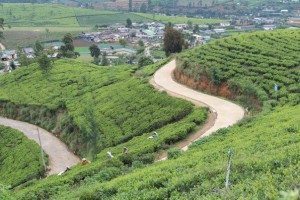
Tea plantations near Nuwara Eliya
Nuwara Eliya
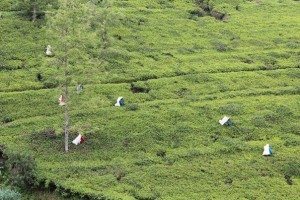
Tea plantations near Nuwara Eliya
Nuwara Eliya (which is always pronounced “noorelia” by the locals) is only 68 kms from Kandy, but is at 1800m. The winding road there takes two hours for a minibus to navigate, and tested the effectiveness of my anti-nausea tablets. This was a British colonial retreat – the high altitude gives Nuwara Eliya a cool climate, and reminded the colonialists of the motherland. Today, Nuwara Eliya has become a major tourist destination, with its toy-town ambience and verdant green environs. I checked in to the small but funky King Fern Cottage. Owned and managed by the bohemian Nishant, the wooden lodge is built in a small valley, on stilts over a babbling natural spring. Soon after arriving I walked the four kilometres out of town to Pedro tea estate, a tea plantation run by Portuguese descendants, which is open to the public. The road there was busy, but lined with quaint tea plantations which blanketed the hillsides. Occasionally I would walk past a
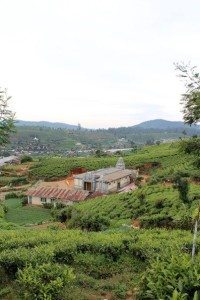
Temple amid a tea plantation near Nuwara Eliya
small fresh fruit stall – Sri Lankan fruit is excellent, and the locals pick it up pre-cut as a snack from roadside stalls. Often they’ll sprinkle it with salt – as strange as it sounds, I tried raw (green) mango sprinkled with salt; the added condiment seems to bring out the sweet-sourness of the fruit. More often they’ll spice it up with chilli – Sri Lankan food is some of the spiciest in the world. In fact many spice-loving Indians have been known to ask for ‘mild’ curries while in Sri Lanka! While in Sri Lanka I tried devilled beef (beef marinated in chilli sauce for days, then cooked with more chilli, whole onions, garlic and ginger), pol sambar (shaved coconut and chilli), and the spiciest dhal (lentils) I’ve ever tasted! Having said that, Sri Lankan cooks know that not all foreigners are accustomed to spice, and will season accordingly. In case you’re wondering, Sri Lankan food is similar to Indian food, but the ingredients reflect the tropical island life as opposed to continental India. Think lots of seafood, fish paste, rice (not bread), rice-based stringy pancakes, coconut, pineapple, tamarind and heaps of other tropical fruits that you can’t find abroad. ‘Mango curry’ is just that – chunks of mango cooked in place of meat in a spicy coconut milk curry.
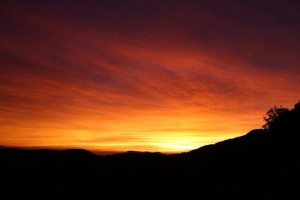
Sunrise near World’s End
Walking back from the tea plantation I stopped by Lovers Leap, a small but impressive waterfall a few hundred metres up a country lane. There I got chatting with four local guys who had just received their results for their A-levels (the Sri Lankan school leavers’ exam). I asked them if they were from Nuwara Eliya; two of them were, but the other two were from Kandy. I asked them if they were on holidays in Nuwara Eliya, to which they replied that they were escaping from their families after their results came back as failed. We chatted and walked back to the main road and I jumped on a bus back in to Nuwara Eliya. I wanted to save my feet for the next morning.
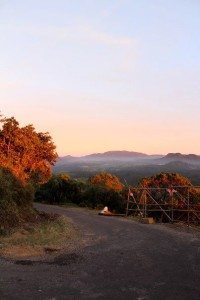
Sunrise over Horton Plains
The next day I woke at 4:30am to see World’s End, the edge of the mountain range which divides central Sri Lanka. It sits in the middle of Horton Plains National Park, one of Sri Lanka’s biggest. Freezing, I, along with four other tourists piled into a minivan to drive to the edge of the plateau. As we drove the sun began to rise, and we swept around one corner to glimpse a golden band of honey which had flooded the horizon. Soon enough we were at 2100m, and at Farr Inn (as opposed to Farr Out?) where we began our hike. It was light enough to walk, and the path was paved for the most part. 3.5 kilometres later we arrived at World’s End. Here, the mountain range comes to an abrupt end; rugged forest gives way to a sheer cliff, 870m high. We had arrived early to see the view, as the mountains attract clouds and by mid-morning the mist swirls in to create a complete whiteout. We could spot small tea plantation towns in the valleys below, and in the distance a few lakes. The view was certainly spectacular, but we would have needed a pristine day to see the coastline about 50kms away. We took the loop track back, via some small waterfalls, to complete the 9.5km circuit. On the road back to Nuwara Eliya we encountered a elk, probably a species introduced by the British when they were trying to imagine they weren’t in Sri Lanka (although I could be completely wrong). It could smell the leftovers of our packed breakfast, and stuck its head through the van window, sniffing out some food. I decided to feed it a banana which I didn’t want, and it swallowed it whole.
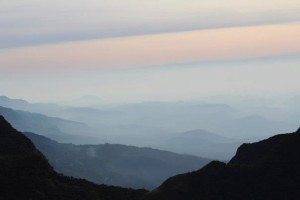
The misty view from World’s End
I spent that afternoon sipping strong local tea, avoiding the temptation to sleep, before eventually calling it an early night.
Essential Stats
Culture shock: 7/10
Language difficulty: 6/10
Quality of food: 8/10
Cost: 5/10
Physical demand: 7/10
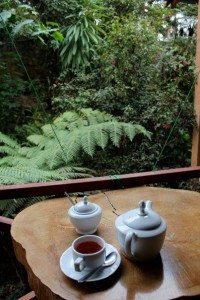
Must… not… sleep… Tea at the King Fern Guest House!
Advice and warnings
The usual precautions apply – no walking alone at night if you can help it, keep a close eye on your valuables, etc. Be aware of pickpockets, especially in crowded places.
Check Smart Traveller or the British Foreign Office for more comprehensive warnings.
Visas
Before visiting Sri Lanka, all nationalities (except for Singaporeans, Maldivians and Seychellois) must complete an online ‘Electronic Travel Authorization’, or ETA. This can be done through this website. Indians, Pakistanis and other SAARC nationals pay US$15, while Australians and others pay US$30.
Getting there and around
From Chennai, Sri Lankan Airlines flies to Colombo daily. Flights start from INR 11,093 return.
From Melbourne and Sydney, Malaysia Airlines flies to Colombo via Kuala Lumpur.
Melbourne (from $1437 return)
Sydney (from $1455 return)
Since direct flights between Pakistan and Sri Lanka ended, Emirates provide the best connections from Lahore to Colombo. (Although not direct, other options would involve an Indian transit visa, along with all the hassles that would entail for a Pakistani citizen). Return flights start from PKR 97,179.
From Kandy, a buses cost around 125 Sri Lankan Rupees for the one way trip to Nuwara Eliya, or Rs. 250 from Colombo (6 hours).
Accommodation
I stayed at the atmospheric, tree-house like King Fern Guesthouse and loved it!

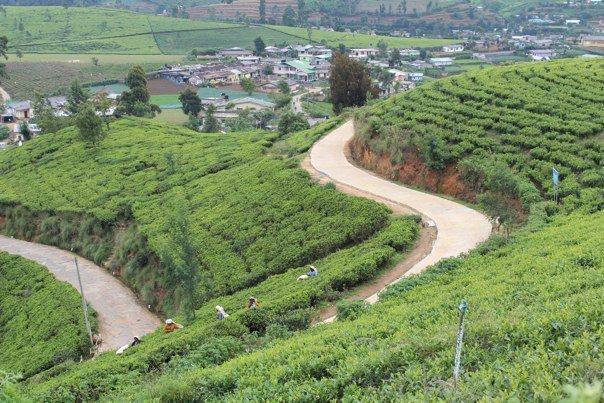
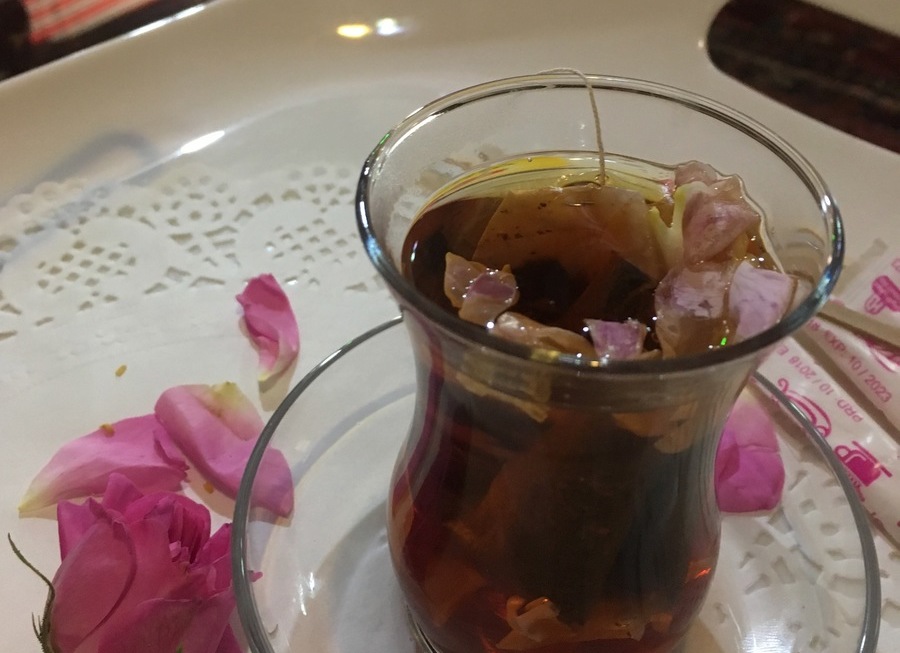


It looks like a wonderful setting Tim. I just hope it doesn’t grow too popular and be ruined with tourism. These tea plantations are a good way to seek to preserve a natural environment.
It’s lovely, and I’m with you in hoping that it doesn’t get spoiled. I guess time will tell. Thanks for reading!!